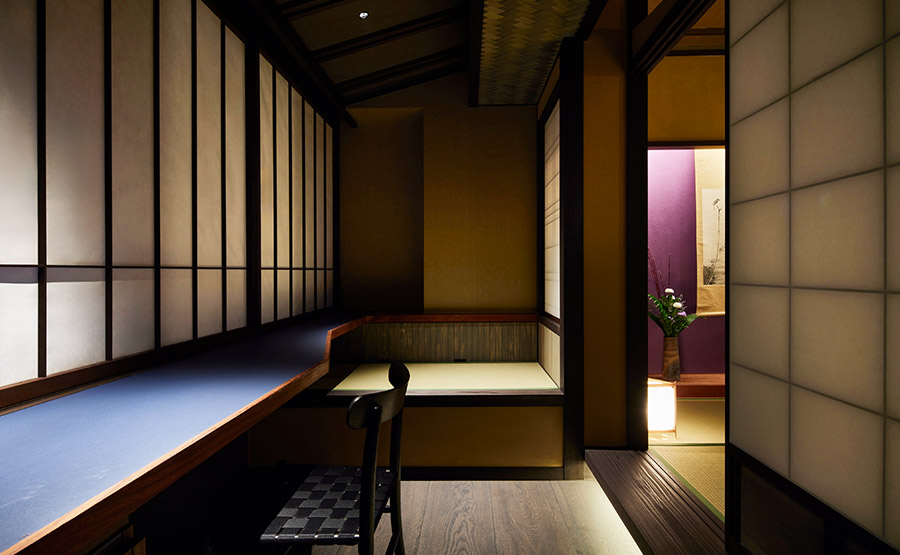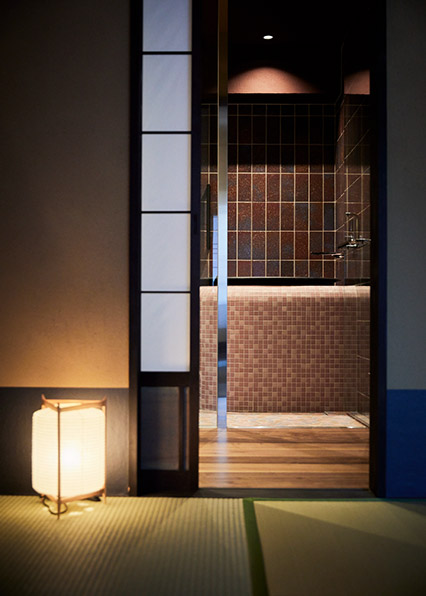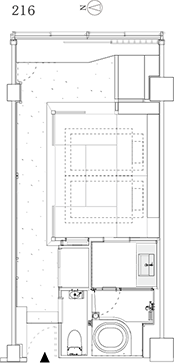





Sliding shoji doors and wallpapers change appearance
by reflecting the passage of time in all four seasons.
A small indoor porch extends beyond the array of the arrangements of a room with
a wooden floor, earthen walls, and a wickerwork ceiling.
Finishing carpentry that took advantage of individual materials
is filled with the less-is-more approach.
This place is “The modern Suki-ya tea-ceremony house” with
the culmination of Japanese tradition and craftsmen’s consideration.
Comfort and architectural beauty in a space where the spirit of harmony as well as
the wabi-sabi that is Japanese delicacy sense of beauty
exist together as peaceful time slowly flows.
An impressive aluminum board and batten ceiling, Ayame (Iris color) and Futa-Ai (Reddish blue) bewitching traditional Japanese color walls enclose an alcove. We expressed "Timeless Japanese architectural beauty" with the remnant of the old leisure district Hanamachi, which existed in Itsukushima in previous times, hidden in the shoji sliding doors that look down the approach and the designs with beautiful colors and unexpectedness.
A Ajiro -wickerwork ceiling- where cedar boards stained in the Jindai-shoku (sinker-wood color) were woven in the Yabane (arrow feather) pattern and a sloping ceiling extends from a Tsukeshoin (a built-in table). Traditional Japanese beauty spreads throughout the entire space.

A bathroom space where originaly toned Tokoname ware tiles and the Goemonburo bathtub evoke a Japanese atmosphere.
Please take your time and enjoy the Goemonburo, which made the culture of bathing popular in Japan during the Edo period, by soaking in the mellow bath.




Rooms